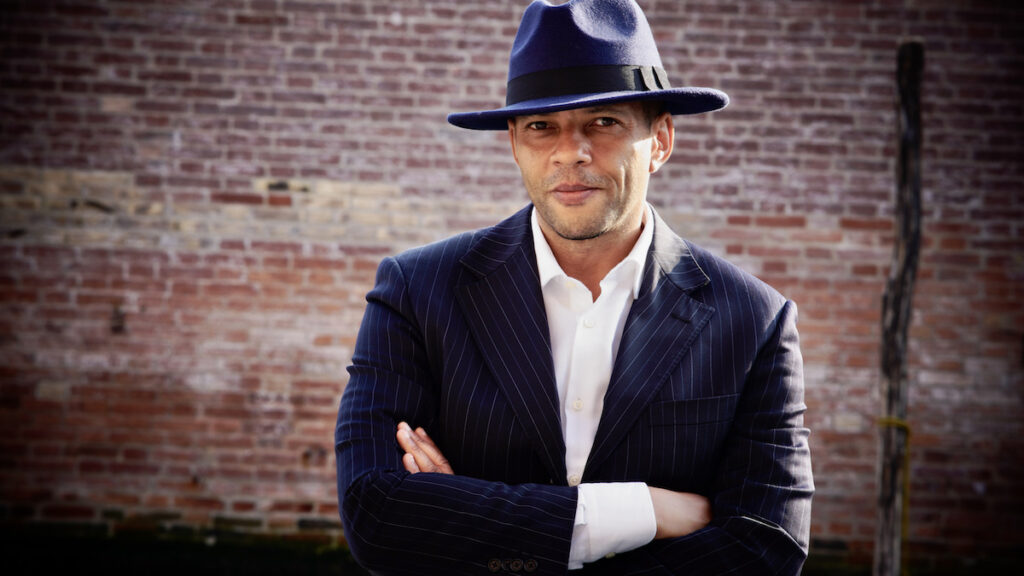
By Fred Kudjo Kuwornu
I remember the same tensions when in 1996 the Italo- Dominican Denny Mendez was elected Miss Italy but many people did not want to accept that there could be a Black Miss Italy, many of these were normal people also from the Italian democrat party… The same happened with the first player in the Italian national football team: Mario Balotelli. Italy, when it comes to talking about Blackness, splits in two narrations. A part of the society is racist even if the Italians do not define themselves as racists, and another part, is apparently anti-racist, but mainly “paternalist” and considers Black people victims to defend, because they are incapable of denying their own conscience. This dualism creates a short circuit in which the Italian Black community delays in establishing itself for years compared to other Black communities in other countries of Europe because it is unable to understand a clear strategic path of protagonism in a country with many shades.
The work that I have been doing for years in Italy is based on building a counter-narrative that has nothing to do with the purpose of destroying the status quo but simply aims to fill the emptiness of representation that first of all limits the self-awareness of minorities and at the same time limits the idea of itself that the nation Italy has. Often the Italian calls himself Italian with the same idea of homogeneity that Sweden thought about themselves in the early 1900s. Except that, the Italians, before being a biological and ethnic group, are first a political construct.
A void that in Italy is still evident in many aspects of the mainstream: television, advertising, politics, state institutions such as public offices or law enforcement agencies. In the debates and talks in Italy when television or newspapers are talking about Italian issues, Black people are never invited, although competent, as though they are not part of the country. This happens also when the conversation is about the current news of Africa or about immigration or post-colonial issues. The Black body is almost totally absent except when it is to be shown as a poor person, a weak person, a victim, a refugee, or a criminal.
Unlike other realities in Europe, the Italian territory has always had a geographical view of the Mediterranean. Over the centuries, this geographical proximity has also become biological and subsequently a cultural proximity. What is an Italian if not a mixture of different chromosomes from Africa, the Middle East, Asia Minor, and Northern Europe? Thus, it has been for millennial times. Just think of the Roman Empire and its proximity not only to North Africa but also to the Egyptian Empire, an empire which, as we well know, was made up not only of the current Egyptians but also of the Nubians, the backbone of the Egyptian army made up of the current Sudanese.
This initial melting pot was then completed in the following centuries and in the various historical experiences of primary importance such as the Renaissance, the Republic of Venice, experiences that made the trade and cosmopolitanism of the time a great asset. It seems paradoxical but what we proudly call “made in Italy” is just a centuries-old elaboration of the intertwining of knowledge, inspirations, and contaminations that different bodies and minds have refined and reproduced in art, architecture, food, clothes, and in the Italian forma mentis.
There is no average Italian. Considering that even before the Romans some of the populations that inhabited the Italian territory had different origins, sometimes even uncertain, such as the Etruscans. Certainly, with the Romans begins
a period of DNA enrichment of different peoples and contact with Africa that makes the Italic territory perhaps the first in Europe to have this interaction but also a considerable population of Africans in ancient Rome.
From my perspective as an Italian-Ghanaian, the work that the Black community in Italy must do must move in two directions.
Black Italians are not a homogeneous group as they could be in the United Kingdom or France or in Belgium and Holland. First of all, while in the United Kingdom there is a historical origin from the former English colonies, and in France from former French colonies and French departments or Belgium and its former colonies. In Italy, there are African descents from different areas, indeed paradoxically Eritreans, Somali, and Ethiopians (the former Italian colonies) put together are not as numerous as Nigerians or Ghanaians or Senegalese communities. We also consider that numerically the first community in Italy are people from Maghreb.
If this limits the construction of a homogeneous Black community, with its own unity, at the same time it is a great enrichment and resource for Italy. Because the future is not played only on building a European identity but created and cultivating being Italian-Ghanaian, Italian- Nigerian, Italian-Senegalese, etc… Generation Z but also the Millennials can have the hope of seeing the African Renaissance and to be protagonists if they manage to be part of the exchanges and processes underway between Africa and Europe.
Let’s not forget that many young Italians emigrate and try to do that within Europe and North America, but with many difficulties and a lot of competition. Few still venture into the continent in Africa where instead the possibilities for those with medium-high skills are multiplying. There is still an image of a poor Africa when instead one of the few opportunities for young people in Europe is no longer the American Dream but for the geographical area and perhaps and the opportunity to develop demand in all sectors is the Africa Dream. To whom do they sell European over- production as Europe is aging? Where to experiment new market and culture models if not in the continent with the youngest average age? What happens in Italy in terms of building a Euro-African identity is more similar to the laboratory that happens in European countries bordering the Mediterranean such as Greece or Spain. For this reason, I founded i2020 Teaching Black Italy, an online professional development course, which explores the historical and contemporary presence of the African diaspora in Italy. Participants will learn about the origins of Black Italy and the diverse composition, culture, stories of Black Italians in different historical times, frameworks, and topics.
Teachers can visit for more info: https://www.blackitalia.info/teachingblackitaly
About Fred Kudjo Kuwornu
Fred Kudjo Kuwornu is an Italian-Ghanaian, naturalized US Citizen multi-hyphenate filmmaker, activist, educator, and producer, born and raised in Italy and based in New York where He founded his company production Do The Right Films. He is best known as the director of critically acclaimed documentaries such as Blaxploitalian, Inside Buffalo, and 18 IUS SOLI. His documentaries deal with political and social themes, such as racism, interracial relations, diversity, Afro-Italians, and Black diasporic identity in Italy and the African diaspora in the world. Fred Kuwornu holds a Master of Arts in Political Science from the University of Bologna, Italy, focusing on sociology and mass communication studies. In July 2021, He launched the platform BlackItalia.info and “Teaching Black Italy” a one-week refresher online course for professors which explores the contemporary presence of the African diaspora in Italy. Kuwornu is a Diversity & Inclusion consultant for Netflix Italy and other media broadcasters in Italy. He has taught courses and labs at several Colleges in the U.S. He is currently developing “We Were There,” a feature documentary about the African presence during the Renaissance in Europe.
